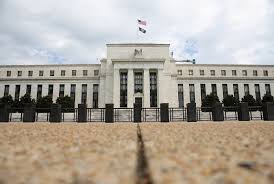Rate Cuts Could Happen Later. There’s No Need to Get Afraid

What difference does it make if the Federal Reserve decides to begin rate cuts in June as opposed to May?
Not much to investors, or even to the larger economy. However, that isn’t how they responded to the consumer price index report released on Tuesday. By midafternoon, the Dow had dropped as much as 750 points, and it ended the day 525 points, or 1.4%, lower. A 4% decline was seen in the more rate-sensitive Russell 2000 index of small-cap equities, while the yield on 10-year U.S. Treasury notes reached its highest level since November.
This was all due to the Labor Department’s measurement of inflation in January exceeding experts’ estimates, increasing 3.1% over the previous year, as opposed to a 2.9% pace. Because of this, traders believe that the Fed’s first interest rate decrease will now most likely occur at the policymakers’ meeting on June 12 rather than May 1, as indicated by the CME Group’s FedWatch Tool, which monitors changes in fed-funds futures.
A little perspective is required: The January number was the slowest since last June and was still below December’s 3.4% pace. Indeed, the core inflation rate excluding food and energy remained constant in January at 3.9% from December. However, a single month where core inflation did not decrease hardly appears to warrant alarm. In July 2023, just six months prior, core inflation was 4.7%.
As prices decline for items like clothing and used cars, goods inflation is still negative, in part because to the end of pandemic shortages. The area of concern is services, where seasonally adjusted core prices, excluding energy services, increased by 0.7% in January compared to the same month last year, up from a 0.4% increase in December.
The worst-case scenario is that a tight labor market is the cause of this rise in service costs, in which case the Fed may decide to hold off on raising interest rates while it waits for the labor market to relax. The most recent jobs data was surprisingly robust, so it didn’t appear soft at all.
However, further investigation revealed some indications that the spike in services inflation in January was an anomaly, or, as economists put it, “more noise than signal.” Most remarkably, after rising by 0.4% in December, housing expenses increased by 0.6% in January. Research company Capital Economics referred to this increase as “suspicious looking” in a note, citing the stagnation of alternative metrics of newly signed rents.
They continued, “We still anticipate further disinflation in these CPI measures based on current rents soon.”
Similarly, official data on owner-equivalent rentals “show a sawtooth pattern of ups and downs recently,” according to economists at BNP Paribas.
In summary, if the rate of newly signed leases continues to decline, this will ultimately result in lower inflation readings in Labor Department data. Furthermore, as numerous analysts pointed out on Tuesday, housing expenses are given less weight in the Commerce Department’s inflation gauge, which is the Fed’s favored measure.
Of course, the Fed makes no promises. A rapid decline in interest rates shouldn’t be taken for granted by investors. The Nasdaq-100 index of major tech companies rose 24% between the start of November and Monday’s closing thanks to optimism that it would happen. It was already looking like a euphoric valuation in that segment of the market, so a little prudence at this point could be prudent.
Nevertheless, America is hardly the Magnificent Seven. The general picture for the US economy, which is characterized by surprisingly robust job growth combined with declining inflation, is still the same. That hardly seems like a situation that should cause investors to lose their minds.




